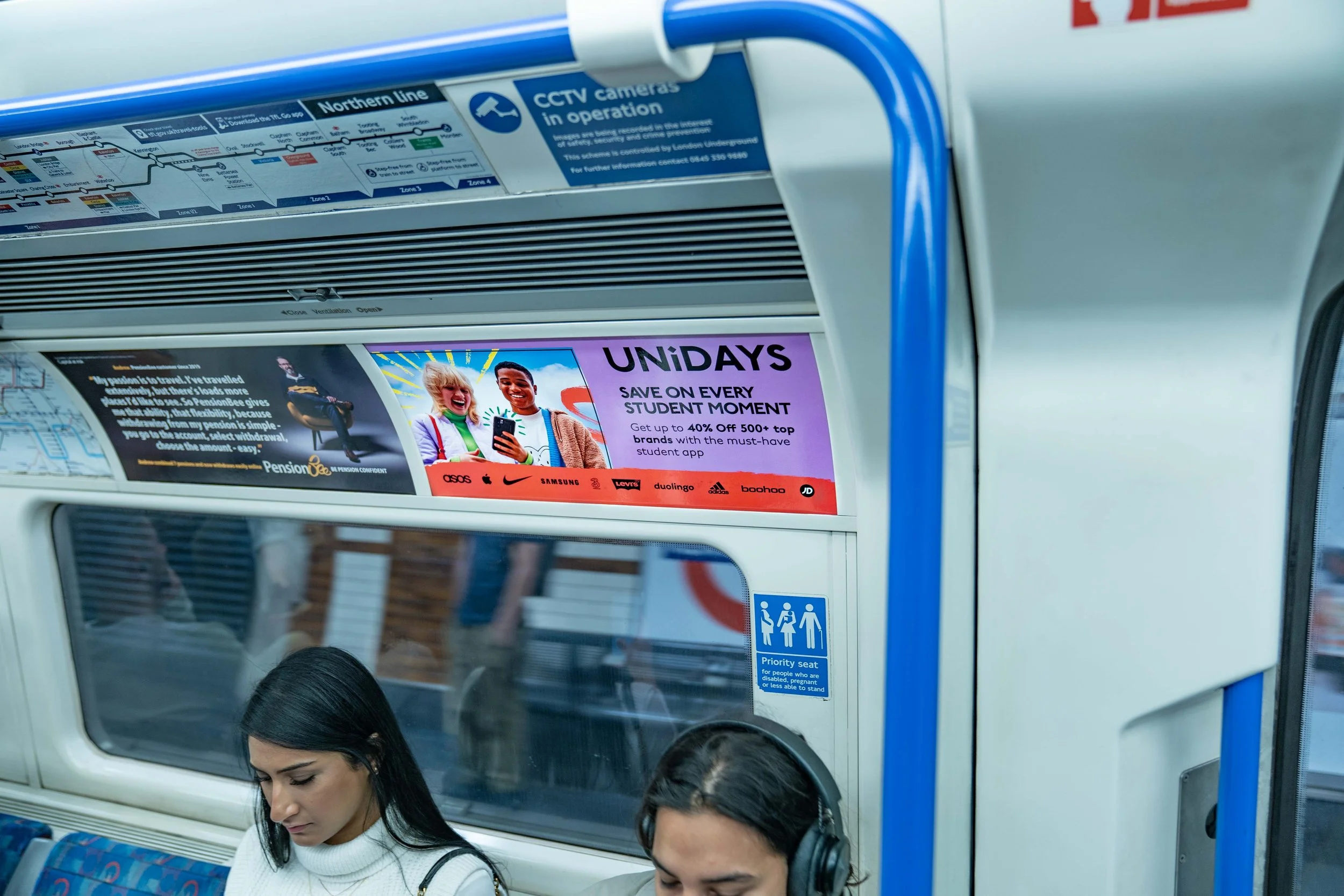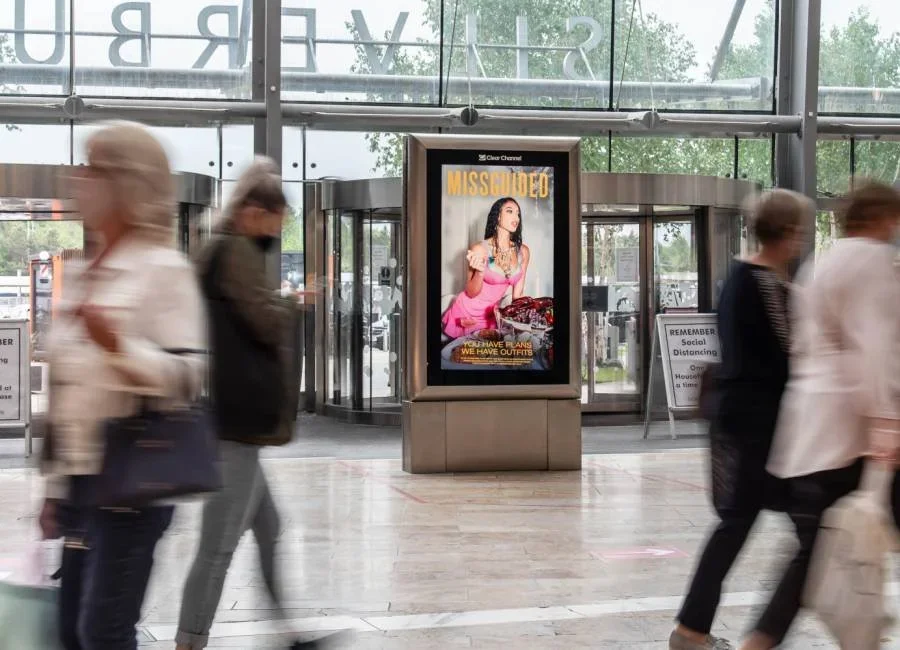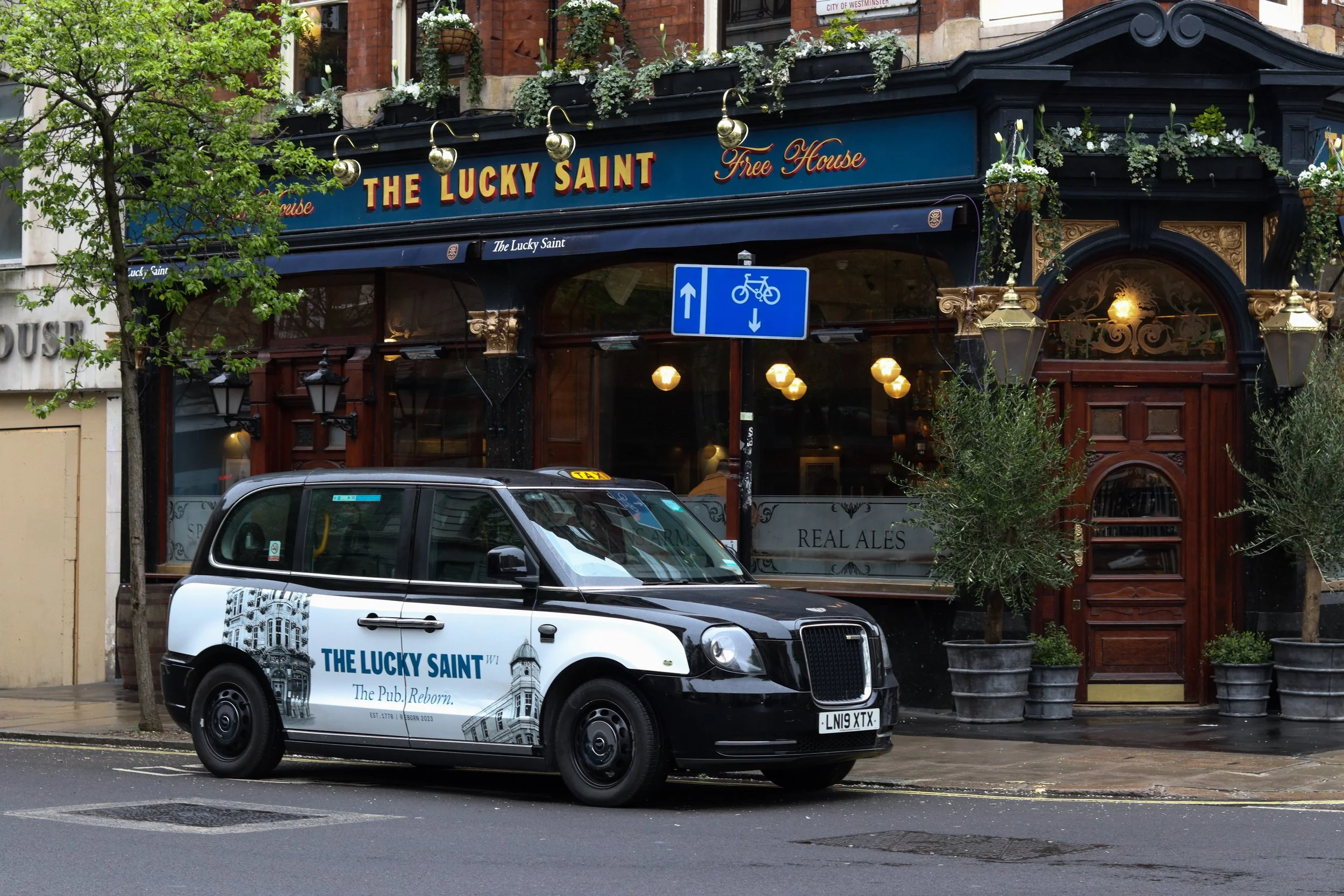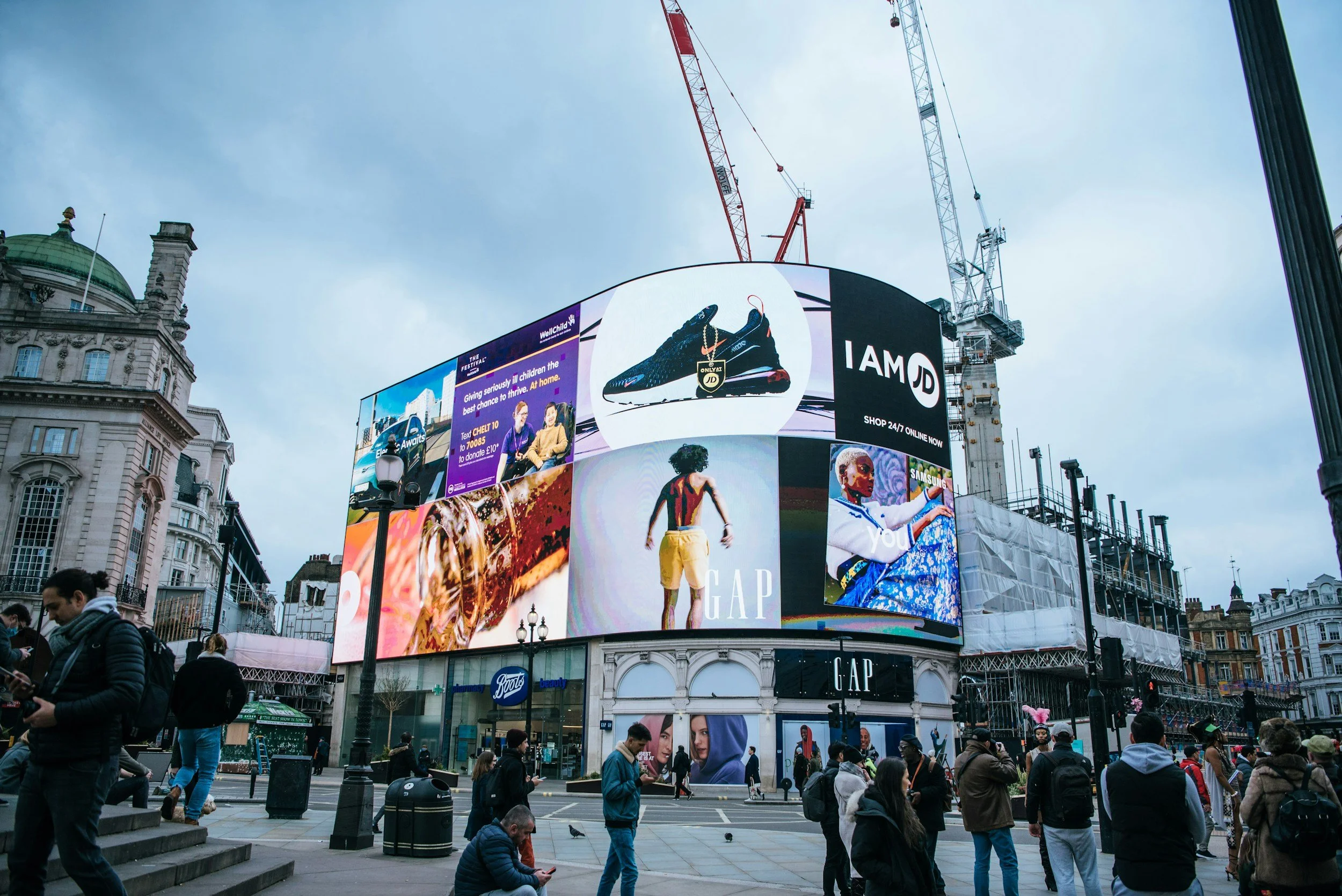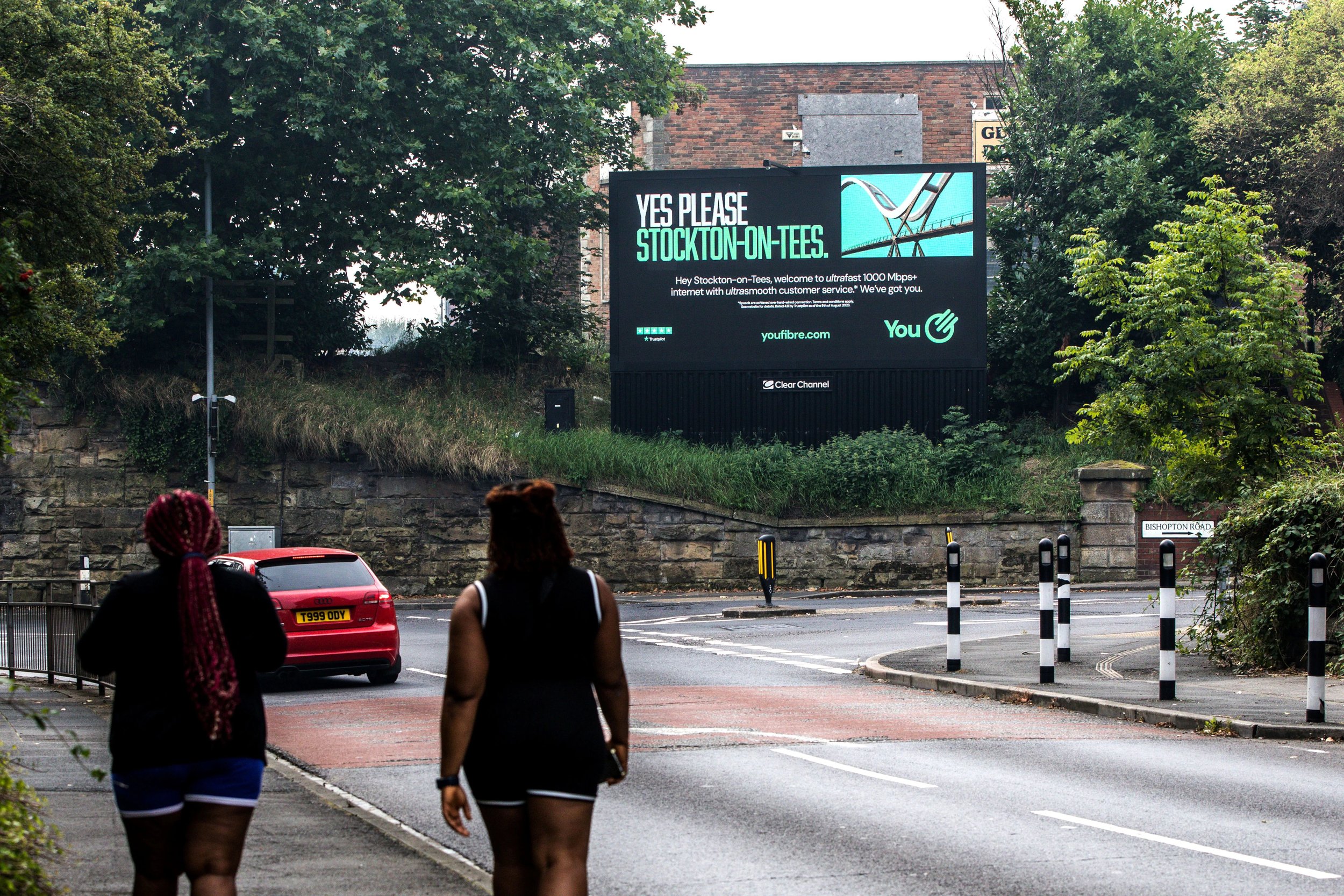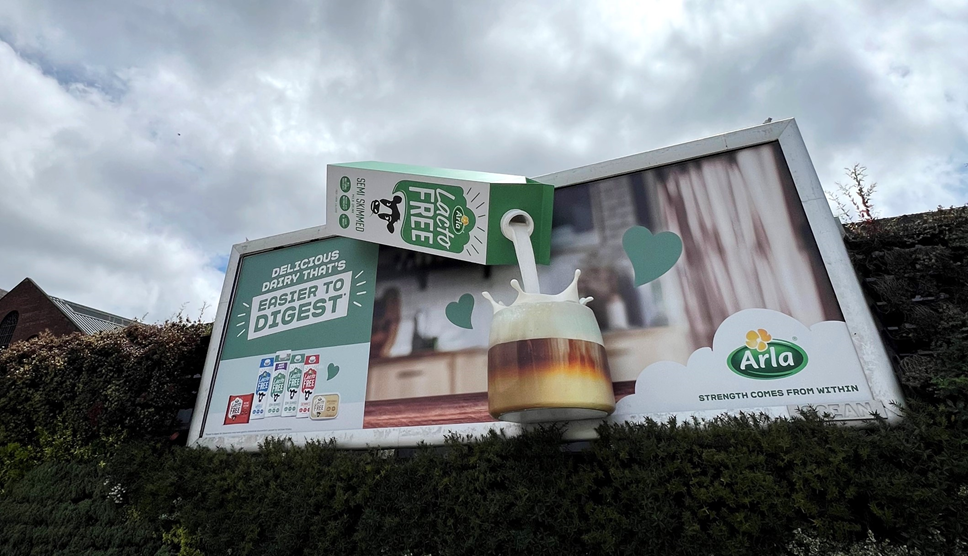The Effectiveness of Advertising in the Transport for London (TfL)
Key Takeaways
TfL advertising is highly cost-effective, with formats like tube car panels delivering CPMs as low as £2.50. This makes it accessible for both local businesses and global brands while ensuring strong returns on investment.
The network offers diverse formats, from cross-track posters and escalator panels to digital 6-sheets, allowing advertisers to mix high-impact visibility with captive, repeated exposure throughout passenger journeys.
With millions of daily commuters and consistent travel routines, TfL delivers both vast reach and high frequency. This repeated exposure boosts brand recall, making it one of the most effective environments for advertising in the UK.
Advertising in the Transport for London (TfL) network has emerged as a highly effective strategy for brands looking to make a significant impact. Known for its extensive reach and cost-effectiveness, TfL offers a unique platform for advertisers. This essay explores why advertising in TfL is considered super effective, focusing on aspects like cost efficiency, diverse advertising formats, campaign cost variability, audience reach, and the critical role of frequency in successful campaigns.
TfL Advertising - Tube Car Panels.
Cost-Effectiveness of TfL Advertising
One of the most compelling aspects of advertising in the TfL network is its cost-effectiveness, particularly when analyzed from a cost-per-thousand (CPM) standpoint. CPM refers to the cost of reaching a thousand viewers or impressions. In the context of TfL, tube car panels stand out as exceptionally cost-effective, with an average CPM of only £2.5. This affordability makes TfL an attractive option for a wide range of advertisers, from small local businesses to large multinational corporations.
Diverse Advertising Formats in TfL
TfL boasts a variety of advertising formats, catering to different needs and creative approaches. These include:
Cross Tracks: Located opposite the platform, these large-format displays capture the attention of passengers waiting for trains.
Escalator Panels: Positioned along the escalators, these panels provide a captive audience as passengers ascend or descend.
Tube Car Panels: Inside the carriages, these panels offer sustained exposure to passengers throughout their journey.
Paper 6 Sheets and 4 Sheets: These traditional poster sizes are placed in high-visibility areas within the stations.
Digital 6 Sheets: Offering dynamic and engaging content, these digital displays are strategically placed for maximum impact.
Each format provides unique benefits, from the high-frequency exposure of escalator panels to the captive audience of.
TfL Advertising - Cross Track Adverts.
Campaign Cost Variability
The cost of an advertising campaign in the TfL network can vary significantly based on several factors, including the choice of formats, duration, and specific locations within the network. Campaigns can range from as low as £1,500 to upwards of £60,000 for a two-week period. This range offers flexibility for advertisers to tailor their campaigns according to their budget and objectives.
Extensive Reach of TfL Advertising
The London Underground is a central element of daily commute for millions of people. By advertising in the TfL, brands have the opportunity to be seen by a vast and diverse audience. The sheer volume of daily passengers ensures that advertisements receive extensive exposure, making TfL a highly attractive platform for reaching a wide demographic.
The Importance of Frequency in TfL Advertising
Frequency is a key factor in the effectiveness of advertising in TfL. A successful campaign in the TfL network typically achieves a high frequency, meaning that the average passenger sees the advertisement multiple times a day. This repeated exposure is crucial for brand recall and message reinforcement. In the context of TfL, where commuters often follow the same daily routes, the opportunity for frequent exposure is significantly higher than in many other advertising environments.
A campaign that achieves good frequency can leave a lasting impression on the audience, enhancing the overall effectiveness of the advertising effort. The unique environment of the TfL, where passengers often spend considerable time in transit, provides an ideal setting for achieving this repeated exposure.
So is Advertising in TFL effective?
Advertising in the Transport for London network presents a unique and effective opportunity for brands to reach a wide and diverse audience. Its cost-effectiveness, especially in terms of CPM, makes it accessible to a broad spectrum of advertisers. The range of advertising formats available allows for creative and impactful campaigns, tailored to meet specific objectives and budgets. The potential for extensive reach, given the millions of daily commuters, combined with the importance of frequency in ensuring effective message delivery, makes TfL an attractive choice for advertisers. Ultimately, the TfL network provides a dynamic and impactful platform for brands to connect with their audience, making every advertising pound spent a valuable investment.
FAQ
Q1: Why is advertising in the TfL considered cost-effective?
A1: Advertising in the TfL is deemed cost-effective mainly due to its low Cost Per Thousand (CPM). For example, tube car panels offer an average CPM of only £2.5, providing an affordable option for reaching thousands of viewers, making it a highly efficient investment for advertisers.
Q2: What types of advertising formats are available in the TfL network?
A2: The TfL offers a diverse range of advertising formats, including cross track ads, escalator panels, tube car panels, paper 6 sheets, paper 4 sheets, and digital 6 sheets. Each format caters to different audience engagement strategies and creative needs.
Q3: How much does it typically cost to run an advertising campaign in the TfL?
A3: The cost of advertising campaigns in the TfL can vary widely, typically ranging from £1,500 to £60,000 for a two-week period. The cost depends on factors like the chosen format, campaign duration, and specific locations within the TfL network.
Q4: How does the high usage of the London Underground benefit advertisers?
A4: The London Underground's high usage means that advertisements can potentially be seen by millions of passengers daily. This extensive reach is beneficial for advertisers looking to target a large and diverse audience, making TfL an attractive platform for mass exposure. Find out more about advertising on the London underground here.
Q5: Why is frequency important in TfL advertising campaigns?
A5: Frequency is crucial in TfL advertising as it ensures that an ad is viewed multiple times by the same person, usually about two times per day. High frequency enhances brand recall and message reinforcement, making the campaign more effective.
Q6: Can small businesses afford to advertise in the TfL?
A6: Yes, small businesses can afford to advertise in the TfL due to the range of campaign costs and the cost-effectiveness of certain advertising formats. The flexibility in budgeting allows businesses of all sizes to utilize TfL's advertising opportunities.
Q7: Are digital advertising options available in the TfL network?
A7: Yes, TfL offers digital advertising options such as digital 6 sheets. These digital formats provide dynamic and engaging content options, which are strategically placed for maximum impact.
Q8: How does advertising in the TfL compare to other forms of outdoor advertising in terms of effectiveness?
A8: Advertising in the TfL often offers greater effectiveness due to its high audience reach and frequency of exposure, compared to other forms of outdoor advertising. The captive audience in TfL’s environment, such as in tube carriages or on escalators, enhances the impact of the advertisements.
Q9: Can advertisers target specific demographics through TfL advertising?
A9: Yes, advertisers can target specific demographics in the TfL network by choosing the right type of advertising format and placement that aligns with their target audience's commuting patterns and behaviours.
Q10: How do advertisers measure the success of their TfL advertising campaigns?
A10: The success of TfL advertising campaigns is typically measured through various metrics such as audience reach, frequency of exposure, brand awareness surveys, and, if applicable, direct response rates or online engagement following the campaign.
Learn more about advertising in the TfL by contacting us today for a plan.

